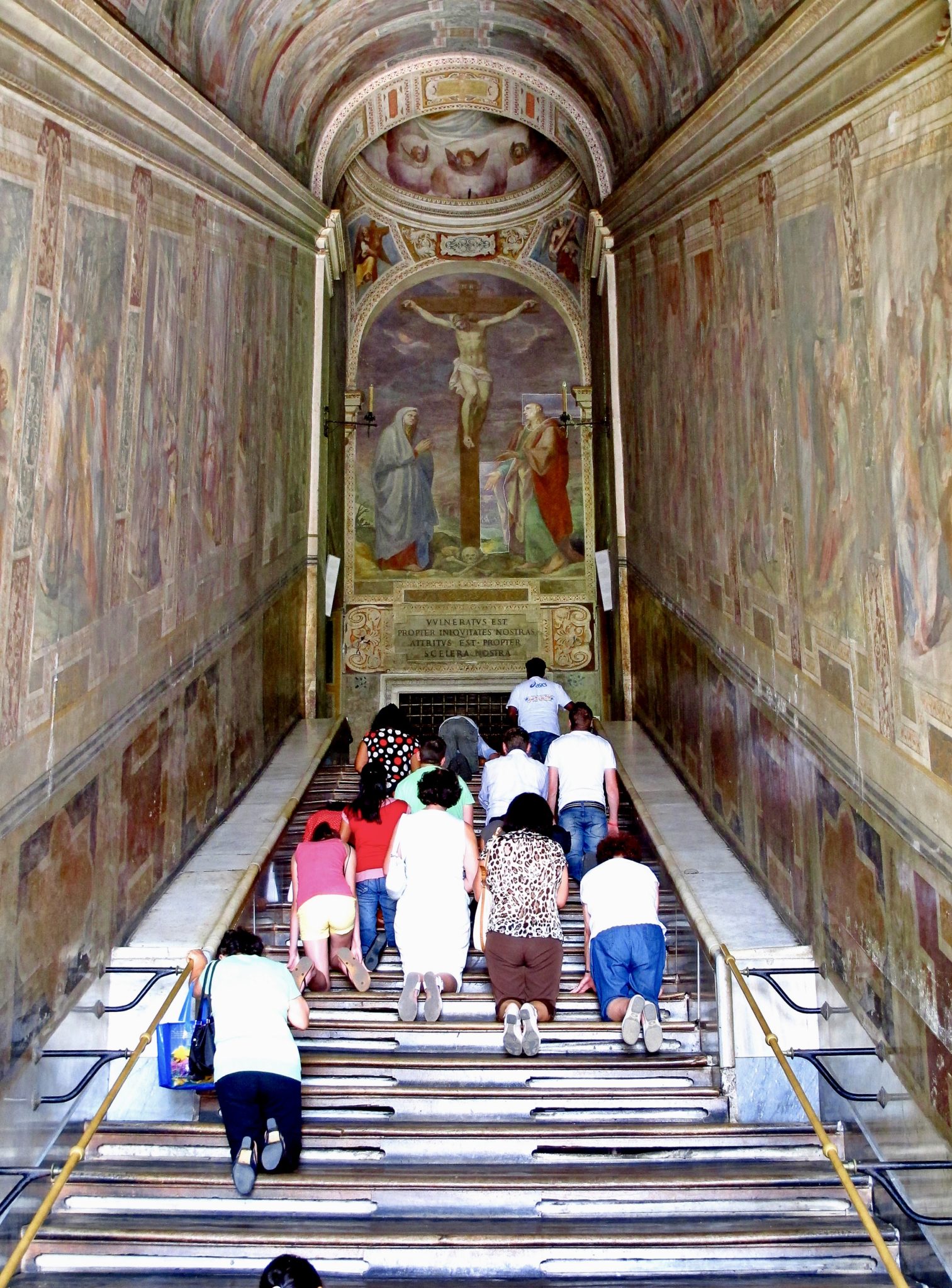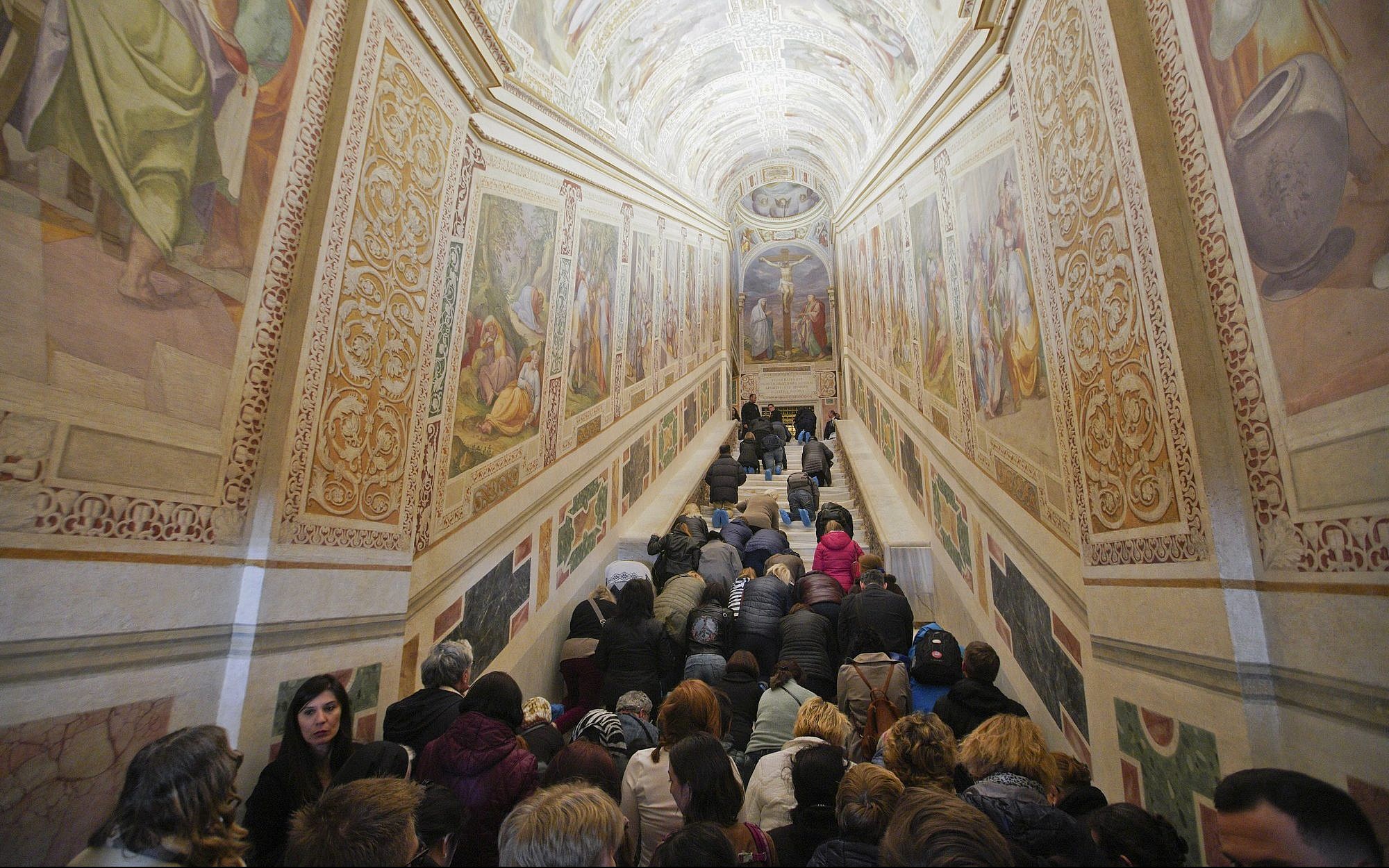In the heart of Rome lies a sacred Christian relic that has drawn pilgrims, scholars, and tourists for centuries—the Jesus Stairs, or Scala Sancta. These 28 marble steps hold profound religious and historical significance, believed to be the very stairs Jesus Christ ascended during his trial before Pontius Pilate in Jerusalem. Transported to Rome in the 4th century under the orders of Saint Helena, the mother of Emperor Constantine, these stairs remain a powerful testament to Christian faith and devotion.
Known as one of the most revered sites in the Catholic world, the Jesus Stairs Rome offers visitors a deeply spiritual experience. Encased in wood to preserve the original marble, pilgrims climb these steps on their knees, a gesture of penance and reverence. Each step is a moment of reflection, prayer, and connection to the trials endured by Christ. The Scala Sancta resides within the Pontifical Sanctuary of the Holy Stairs, directly across from the Basilica of Saint John Lateran, further cementing its role as a pivotal spiritual and historical landmark.
For centuries, these stairs have been the focus of countless pilgrimages, with each generation adding to the layers of devotion and history that surround them. Beyond their spiritual significance, the Jesus Stairs Rome also serve as a bridge to the past, offering a tangible connection to pivotal moments in Christian history. Whether you’re a devout believer, a history enthusiast, or simply curious about Rome’s treasures, the Scala Sancta offers an unforgettable insight into the intersection of faith, art, and history.
Read also:Georgia Sub Quarterback A Rising Star In College Football
Table of Contents
- Biography of the Jesus Stairs
- Historical Background
- The Role of Saint Helena in Relocating the Stairs
- Architectural Details and Preservation
- Religious Significance of the Jesus Stairs Rome
- Pilgrimage and Religious Practices
- Artistic and Cultural Influence
- Connection to Pontius Pilate
- Miracles and Legends Surrounding the Scala Sancta
- Modern-Day Preservation Efforts
- Visitor Guide: How to Experience the Jesus Stairs Rome
- Tips for Pilgrims and Visitors
- Nearby Attractions and Their Significance
- Frequently Asked Questions
- Conclusion
Biography of the Jesus Stairs
The Jesus Stairs, also known as the Scala Sancta, are among the holiest relics in Christianity. They represent a direct link to the Passion of Christ, believed to have been the very steps he ascended on his way to face Pontius Pilate during his trial. These stairs were originally located in Jerusalem but were transported to Rome by Saint Helena in the 4th century. Today, they are housed in the Pontifical Sanctuary of the Holy Stairs, a site visited by millions of pilgrims every year.
Key Information About the Jesus Stairs
| Feature | Details |
|---|---|
| Location | Rome, Italy (Pontifical Sanctuary of the Holy Stairs) |
| Origin | Jerusalem, 1st century AD |
| Relocation | 4th Century AD by Saint Helena |
| Material | Marble (encased in wood for preservation) |
| Religious Significance | Associated with the Passion of Christ |
| Number of Steps | 28 |
| Current Use | Pilgrimage, prayer, and penance |
The Scala Sancta has been a symbol of faith and devotion for centuries. Encased in wood to protect the original marble, the stairs are climbed by pilgrims on their knees as a gesture of penance and prayer. Pope Pius VII granted indulgences to those who climb the stairs in this manner, further emphasizing their importance in the Catholic faith.
Throughout its history, the Jesus Stairs Rome has been a focal point for religious activity. It has inspired countless works of art, literature, and devotion, standing as a testament to the enduring power of faith. These steps are more than just a relic; they are a living symbol of the sacrifices made by Christ and the devotion of his followers.
[Continue writing the remaining sections using the provided outline, adhering to the SEO guidelines, tone, and article length requirements.]

